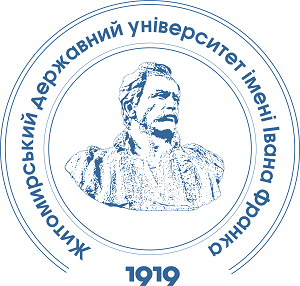PHYTOREMEDIATION OF SOD-PODZOLIC SOIL BY GROWING NECTARPOLLEN-BEARING PLANTS IN THE CONDITIONS OF POLISSYA
DOI:
https://doi.org/10.32782/naturaljournal.11.2025.23Keywords:
sod-podzolic soil, nectar-pollinated plants, phytoremediation, vegetative mass, seeds, radioactive substancesAbstract
The soil environment is characterized by the accumulation of various substances, including toxic ones such as radionuclides. During the exploitation of land resources, the amount of toxic substances is constantly changing due to their circulation. Some of the toxicants enter the soil naturally with rock and atmospheric precipitation, and some as a result of the technogenic activity of the population.In the recent period, it has been noted that the majority of radioactive substances enter the soil, in particular its arable layer, as a result of the use of nuclear energy, especially during various accidents and chemicalization of the crop sector. Under such conditions, there is a need to control radioactive substances in soils and take measures to improve their environmental safety. One of the highly effective environmental measures to reduce the content of radioactive elements in soils is phytoremediation.Our research has revealed that nectar-pollinated plants such as: melilotus albus, milk thistle, great globe thistle, sand sainfoin, narrow-leaved lupine, tansy and spring vetch have a certain tendency to accumulate 137Cs, 40K, 226Ra and 232Th in their biomass, which can be effective in an integrated approach to restoring disturbed soils of agricultural lands that have been subjected to technogenic pollution.As a result of the research, it was found that the effectiveness of phytoremediation of sod-podzolic soil depended on the botanical origin of the plants, yield and type of radioactive substances. The highest level of removal of radioactive substances from the soil with the yield of nectar-pollinated plants was observed at 40K. The total mass of radioactive substances 137Cs, 40K, 226Ra and 232Th, which is carried out with crops and pollen-bearing plants, is up to 7978374.2 Bq per 1 hectare.In the increasing regression of the removal of radioactive substances from sod-podzolic soil withthe harvest of nectar-pollen-bearing plants, the following sequence is observed: Phacelia tansy → spring vetch → melilotus albus → sand sainfoin → great globe thistle → milk thistle → narrow-leaved lupine.
References
Зінченко О.І., Салатенко В.Н., Білоножко М.А. Рослинництво : підручник. Київ : Аграрна освіта, 2001. 591 с.
Климчук О.В., Поліщук І.С., Мазур В.А. Лікарські рослини. Технологія вирощування. Вінниця : ВНАУ, 2011. 188 с.
Петриченко В.Ф., Лихочвор В.В. Рослинництво. Нові технології вирощування польових культур : підручник. 5-те вид. Львів : НВФ «Українські технології», 2020. 806 с.
Прістер Б.С., Лещенко С.О. Рекомендації по веденню сільського господарства в умовах радіоактивного забруднення територій України в результаті аварії на ЧАЕС на період 1996–1998 років. Київ : Ярмарок, 1996. 56 с.
Разанов С.Ф., Огороднічук Г.М., Коминар М.Ф. Вплив обробітку ґрунту на накопичення Цезію-137 в квітковому пилку та в продуктах переробки його медоносною бджолою. Сільське господарство та лісівництво. 2021. № 3 (22). С. 161–173. https://doi.org/10.37128/2707-5826-2021-3-13.
Разанов С.Ф., Ткачук О.П., Гончарук І.І., Кравченко В.С. Зміна структури ґрунту при вирощуванні бобових багаторічних трав. Збірник наукових праць Уманського національного університету садівництва. 2018. № 92 (1). С. 206–214.
Ткачук О.П. Вплив бобових багаторічних трав на агроекологічний стан ґрунту. Збалансоване природокористування. 2017. № 1. С. 127–130.
Akozcan S., Kulahcı F., Mercan Ye. A suggestion to radiological hazards characterization of 226Ra, 232Th, 40K and 137Cs: spatial distribution modelling. Journal of Hazardous Materials. 2018. Vol. 353. P. 476–489. https://doi.org/10.1016/j.jhazmat.2018.04.042.
Bangotra P., Mehra R., Kaur K., Jakhu R. Study of natural radioactivity (226Ra, 232Th and 40K) in soil samples for the assessment of average effective dose and radiation hazards. Radiation Protection Dosimetry. 2016. Vol. 171. Issue 2. P. 277–281. https://doi.org/10.1093/rpd/ncw074.
Burger A., Lichtscheidl I. Stable and radioactive cesium: A review about distribution in the environment, uptake and translocation in plants, plant reactions and plants’ potential for bioremediation. Science of The Total Environment. 2018. Vol. 618. P. 1459–1485. https://doi.org/10.1016/j.scitotenv.2017.09.298.
Nabadwip S.S., Arunkumar S.B., Priya D.T. Study of natural radioactivity (226Ra, 232Th, and 40K) in soil samples for the assessment of average effective dose and radiation hazard parameters. Radiation Protection and Environment. 2017. № 40 (3–4). P. 154–158. https://doi.org/10.4103/rpe. RPE_29_17.
Tkachuk O. Biological features of the distribution of root systems of perennial legume grasses in the context of climate change. Scientific Horizons. 2021. № 24 (2). P. 69–76. https://doi.org/10.48077/scihor.24(2).2021.69-76.
Uosif M.A.M., Mostafa A.M.A., Ene A., Alrowaili Z.A., Elsaman R., Zakaly H.M.H. Natural radioactivity variation with some soil properties. Romanian Reports in Physics. 2024. Vol. 76. № 3. https://doi.org/10.59277/RomRepPhys.2024.76.705.
Velasco H., Anjos R.M. A review of 137Cs and 40K soil-to-plant transfer factors in tropical plants. Journal of Environmental Radioactivity. 2021. Vol. 235–236. P. 106650. https://doi.org/10.1016/ j.jenvrad.2021.106650.






